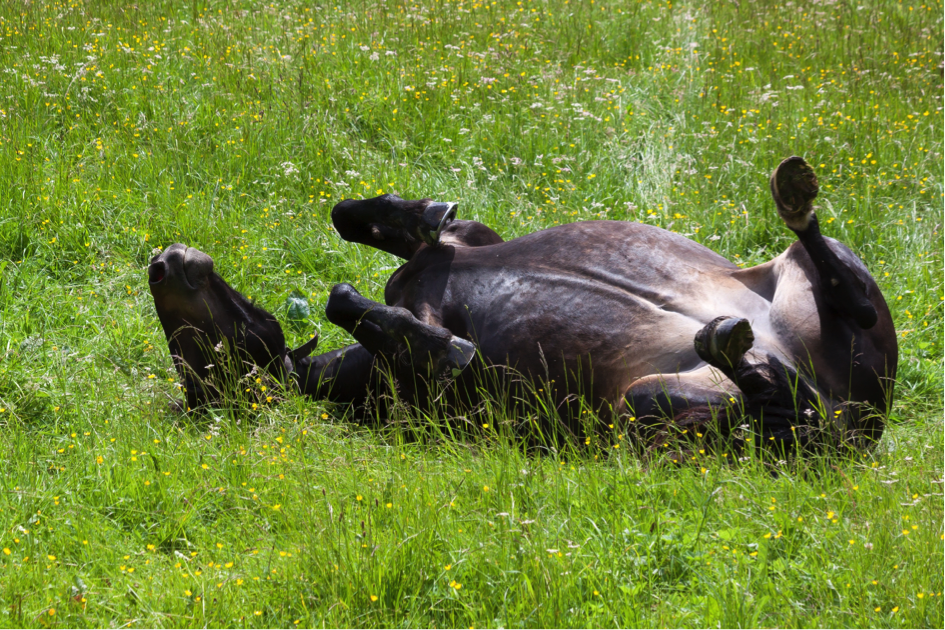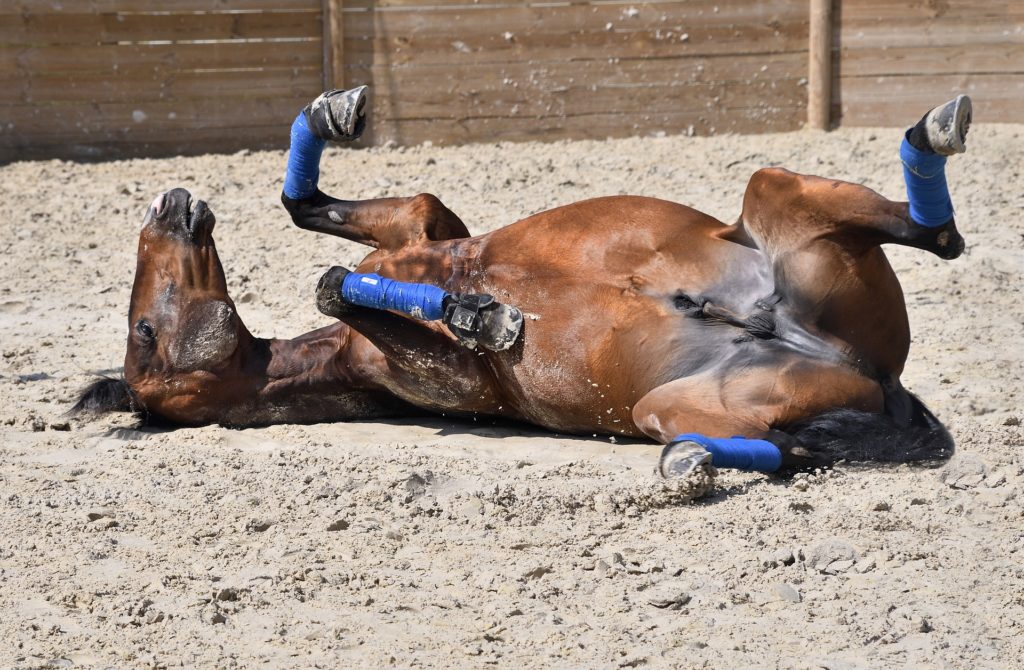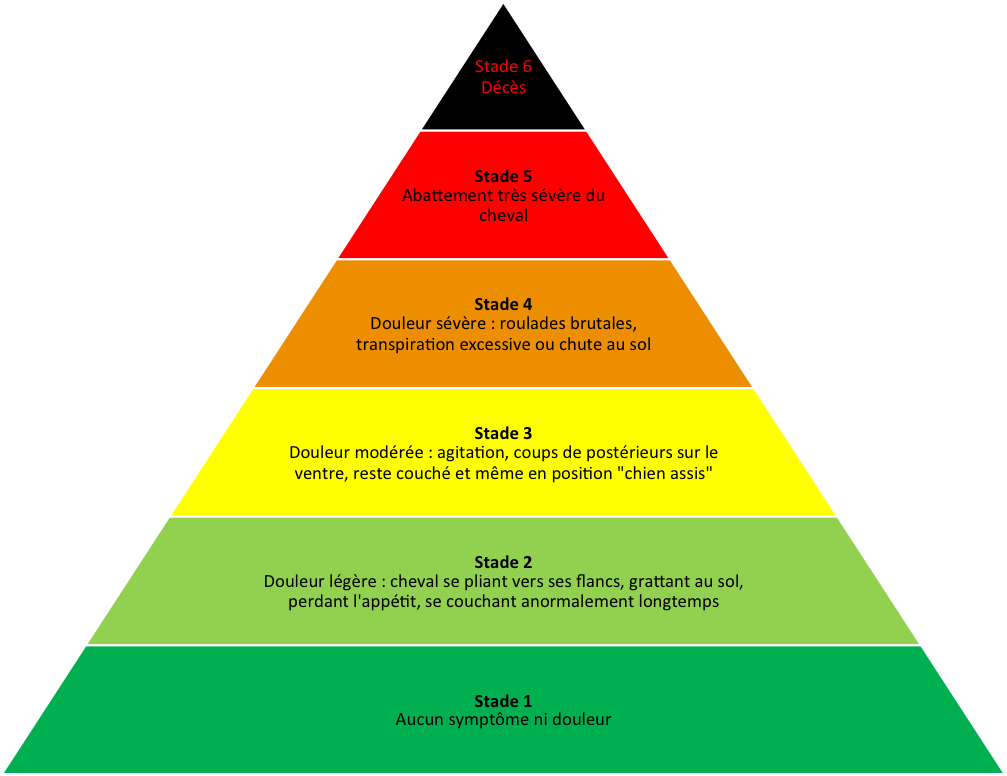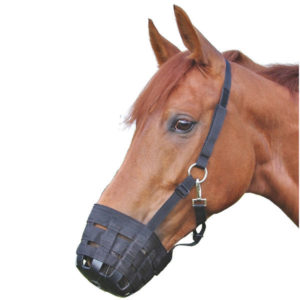Friday, October 25, 2019
1st cause of death Colic is a major concern for horse owners and riding schools alike. Colic is one of the most frequent and serious disorders affecting equines. It is the leading cause of emergency calls to the veterinary surgeon and the leading cause of mortality cause of death. In this article, we explain what colic is, how to avoid it and what to do when faced with a colicky horse.

Well-known to the general public for defining diarrhea in humans, horse colic has nothing in common but the name!
Equine colic refers to abdominal pain in horses. in horses. It is therefore referred to as colic syndrome, not disease. It can occur in the event of anxiety, rapid feed intake or parasitism. A change in diet or an excess of legumes can also cause colic. can also be the cause of colic.
Despite its robustness, the horse has a complex complex and fragile digestive system. This is due to the presence of numerous nerve endings in the intestines, which react to the slightest abnormality. The digestive system is all the more fragile because the horse's stomach is very small.stomach is very small and the the small intestine is very longhence the importance of to divide the horse's rations into several meals a day.
The reason why colic syndrome is so dangerous is that, unlike humans, horses are unable to vomit to evacuate excess food (when his stomach is too full or his digestion is blocked).
There are different stages of the syndrome. However, most colic resolves within 24 hours of the onset of symptoms. Hence the importance of sdetect them early and take effective action !
Colic in horses can manifest itself in different ways:

And what about heart rate?
If your horse suffers from colic his heart rate will increase. Knowing your horse's resting heart rate is therefore an essential prognostic element in monitoring the evolution of the pathology. In the case of colic, a heart rate in excess of 100 beats per minute indicates a high degree of severity.
A horse with no temperature but a very high heart rate at rest should be seen by a vet as soon as possible. This information will give him an idea of the state of the emergency.

Each animal reacts in its own way, and it is rare for a horse to present all of these symptoms. At the first sign of discomfort or pain, you should call the vet. It's often benignbut it can get out of hand and should be taken seriously.
First of all, it's important toassess the horse's condition. If he doesn't seem very down, but starts to lie down for a long time or to look at his flanks, you can go and walk your horse your horse and cut off all access to food.
If someone is qualified, they can inject a simple analgesic such as noramidopyrine (Calmagine) intravenously.
If you have any doubts about the seriousness of the colic, or if your horse's condition remains worrying, it is important tocall the vet urgently to avoid any aggravation or pain!
First equine veterinary emergency 🚨, colic may be due to a blockage which has formed and is having difficulty evacuating. The horse may also be suffering from torsion of the large colon or for other reasons that only a veterinarian can treat. In the most serious cases, curgery may be necessary.
The return of droppings is often a sign of early recovery of transit, but you still need to remain vigilant.

Here are a few tips:

On sale at lepaturon.com
We hope you enjoyed this article!
See you soon,
The Seaver team
Sources :
(2) Doctoral thesis 2006 Laure WALTER (Maisons-Alfort Veterinary Surgeon)
(3) Doctoral thesis 2008 Anne SAVOIE (Lyon Veterinary School)